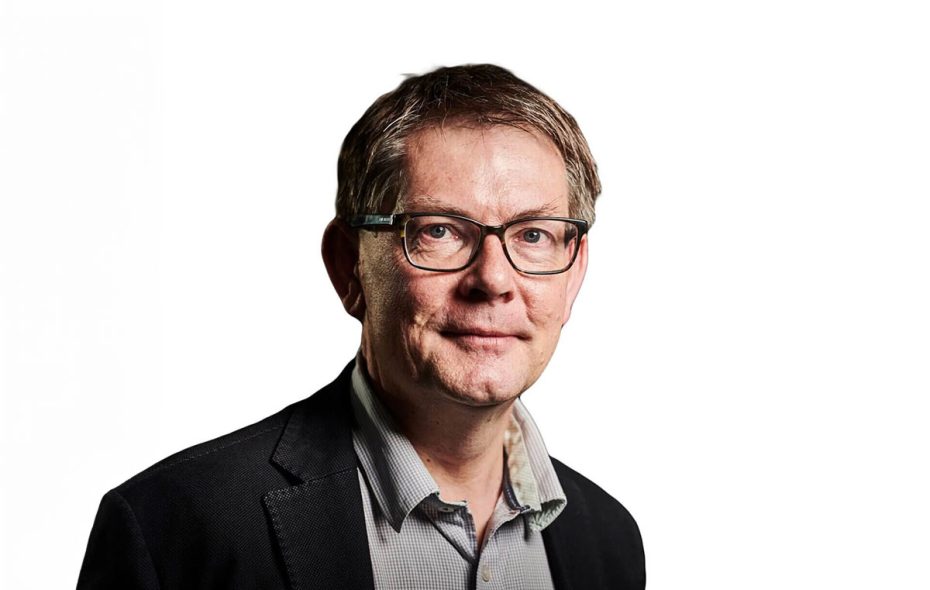
Andrew Muir, PhD, is a director at Midven, and leads the UK Innovation & Science Seed Fund team. He also co-manages the Stephenson fund and is a member of the investment committee for the Early Advantage fund. He joined Midven in 2004. After a degree and PhD in chemistry at the University of Oxford, Andrew carried out research at ICI/Zeneca. He then moved into research and business development at medical device company Biocompatibles just as they floated, and finally was CTO at a US tech start-up. His move into VC began at NESTA (the National Endowment for Science Technology and the Arts), working on their Invention and Innovation seed capital programme.
After I studied chemistry at Oxford, I was convinced that I didn't want to do a PhD. Later, I was also convinced that I didn't want to work in industry. But each time, the lure of staying in science was too strong. Especially when I moved from paints and surface coatings to working on cutting-edge medical devices and materials, being headhunted by Biocompatibles into eye care business development and materials research. Biocompatibles faced some challenges, expanding too fast and then contracting, and so after 5 fun years it was a good time to move on. I became chief chemist and the VP of Technology VP at a small start-up, Sterilox Technologies.
Working at a start-up was a real roller-coaster for four years, and taught me a lot about getting things done with few resources: dealing with unpaid suppliers, customers and the FDA to name a few challenges. My operating roles also showed me how much I enjoyed applying science and business to ambitious, fast-growing technology companies. While I don’t know all the answers to the challenges our portfolio companies, I can ask the right questions and I like getting into the data to help.
So then, in 2004, I joined Mark White at NESTA as one of his first recruits. He and a vibrant young team had helped to turn the UK-based innovation charity into the most active technology seed investor in the UK. This gave me the taste for working with a broader base of technologies, supporting young companies to grow and develop.
Moving to Midven and the UK Innovation & Science Seed Fund in 2004 allowed me to apply both my science and my business interests and experiences in a more conventional VC fund structure. And it allowed me to return a favour too – when NESTA underwent some restructuring and redundancies, I was delighted that Mark could come and join us.
At UKI2S, we don’t have fixed ideas on what we are going to invest in; we follow great science. We want to work with people who are passionate about their research, whether it is in optics, genomics, diagnostics or materials for space, and are eager to see it developed out of the laboratory into a service or product.
Once we have identified high-quality research and we think we can apply our knowledge to make it solve real-world problems, we help to develop the company. This could include finding good business people who can complement the scientists or other investors once we have helped focus the opportunity and added some resources. Typically, this needs more capital and time than, say, a software business but we think the rewards can be greater if we can solve hard problems.
When I was on the Biotechnology and Biological Sciences Research Council (BBSRC) follow on fund grant panel I saw the details of a drug discovery platform from the University of Manchester but it wasn’t eligible for UK Innovation & Science Seed Fund money at the time. The technology became the spin-out company C4X Discovery (formerly Conformetrix). The company helps pharmaceutical companies identify new drugs and speed up discovery pipelines. It was valued at £31 million when it floated on the London Stock Exchange in 2014. Ah well.
It took longer than we hoped when we first invested in Eagle Genomics for them to make the transition from a consultancy to a scalable software company, but now we are really excited at the developing range of genomic solutions they are bringing to a fast-growing market.
The UK has a fantastic science base, and as long as investment continues in that base and our companies can access the talent they need, then I’m optimistic about the future. Our companies export around 75% of what they produce so we are effectively a global investor.